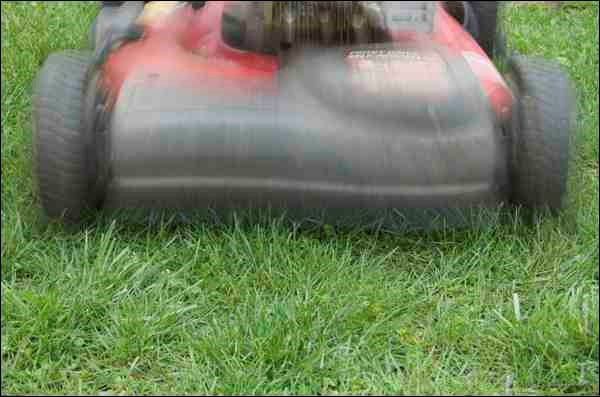I promise you: lawn season is nigh. But while you have the time from not mowing, here are a few points to consider when choosing grass species to use in establishing a new lawn or renovating an existing one.
A conventional prairie lawn is almost always composed of Kentucky bluegrass and creeping red fescue. Together these form an ideal lawn by forming a tight sod on which to sit, play or walk. They have excellent recuperative potential - if damaged by heavy wear, disease or drought, they recover quickly. But significant inputs of water and fertilizer and regular mowing are required to keep them healthy and productive.
When establishing a lawn, plant a mixture of two or more species and a few cultivars within each of these species, rather than growing a single species or cultivar. Follow the adage of not putting all of your eggs in one basket. If drought, cold or disease knocks out one grass species or cultivar, you still have a lawn.
Kentucky bluegrass (Poa pratensis) was introduced to North America from Europe during the colonial era. Hardy, deep green, fine textured and long lived, it forms a dense, hard-wearing sod. It spreads by tillering (that is, sending up new shoots closely adjacent to the original clump) and by rhizomes (short creeping stems that produce new clumps along their length). Most cultivars have good spring and fall colour. They tolerate heavy traffic and recover quickly. Kentucky bluegrass grows poorly in shade and requires high inputs of water, fertilizer and frequent mowing to look good and wear well.
The following cultivars of Kentucky bluegrass perform well on the Prairies and are often part of mixtures: Adelphi, Alene, Alpine, Banff, Baron, Birka, Golden Nugget, Limousine, Midnight, Nugget, Oreo, Park, Quantum Leap, Rugby II, and Touchdown.
Creeping red fescue (Festuca rubra var. rubra), the other major component of prairie lawns, is also native to Europe. It is a low-growing, fine-textured, medium to dark green grass with narrow, stiff blades. It spreads by tillering and rhizomes. It has moderate "wear resistance", standing up well to foot traffic and use, but has poor recuperative ability due to weak rhizomes. It tolerates shade, low fertility and drought. It does not tolerate wet soils or excessive nitrogen and discolours in hot or dry weather.
Recommended creeping red fescue cultivars include: Boreal, Dawson and Jasper.
Creating a custom blend depends to a large extent on the light conditions. For shady lawns, use 20 - 30 per cent Kentucky bluegrass and 70 - 80 per cent creeping red fescue by weight. For sunny lawns, reverse the amounts. For lawns grown under mixed conditions (that is, both sunny and shady areas), use a 50-50 mixture. Over time, the lawn composition will find its own natural balance, adapting to the conditions that favour one species over the other.
The recommended seeding rate for pure Kentucky bluegrass lawn is 1 - 1.5 lb/1,000 sq. ft; for creeping red fescue lawns, use 3.5 - 4.5 lb/1,000 sq. ft. For custom blends of the two species, use the Kentucky bluegrass rate for the sunny lawn mixture; use the creeping red fescue rate for shady lawn mixture; and for mixed light condition use a rate between the two.
Remember the popular song, "I'm looking over a four-leaf clover?" Prior to the Second World War, white Dutch clover was an important part of almost all lawn mixtures. With the advent of broadleaf herbicides meant to rid lawns of all weeds, clover lost its place as there was no chemical that could eliminate weeds and not affect the clover. Yet if clover composes only 5 percent of a lawn seed mixture, it supplies about half the nitrogen needed for a healthy lawn. Many prairie cities have recently reintroduced clover into their parks' lawns.
Check with your local farm supply, garden centres, and nurseries for premixed custom blends using prairie-adapted cultivars.
- Sara Williams is the author of the revised and updated Creating the Prairie Xeriscape, Coteau Books, February, 2013. This column is provided courtesy of the Saskatchewan Perennial Society (www.saskperennial.ca; email: [email protected]).




